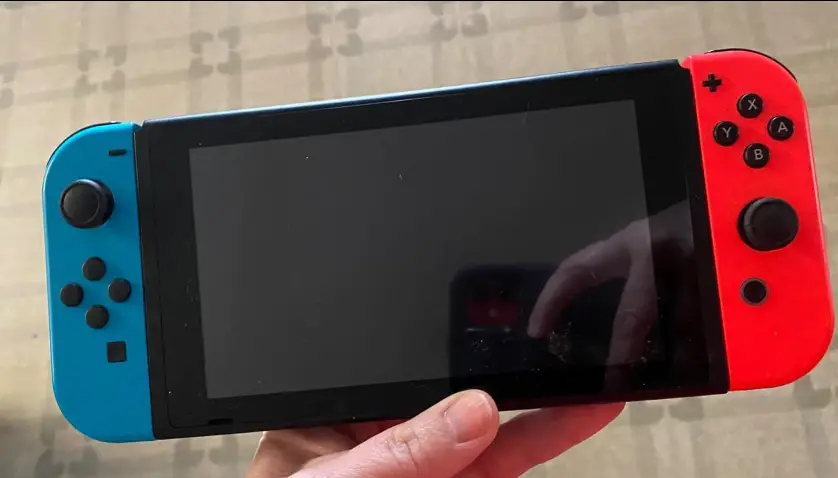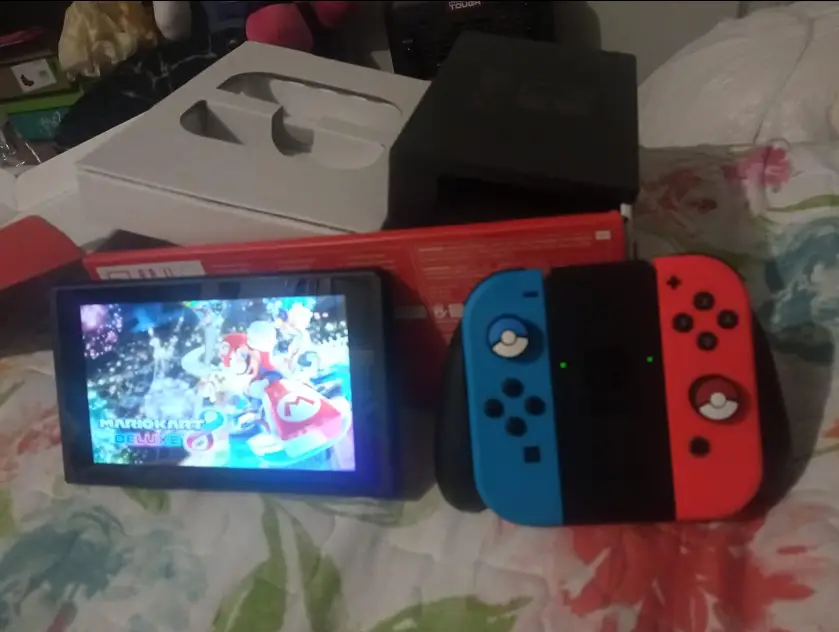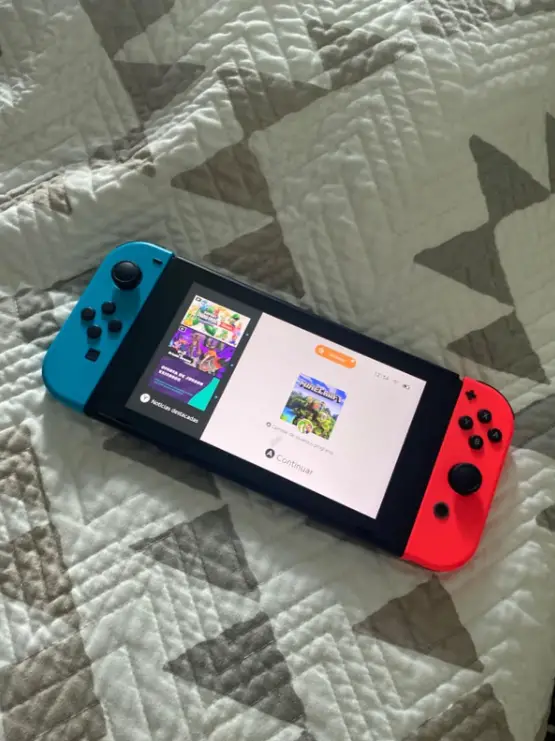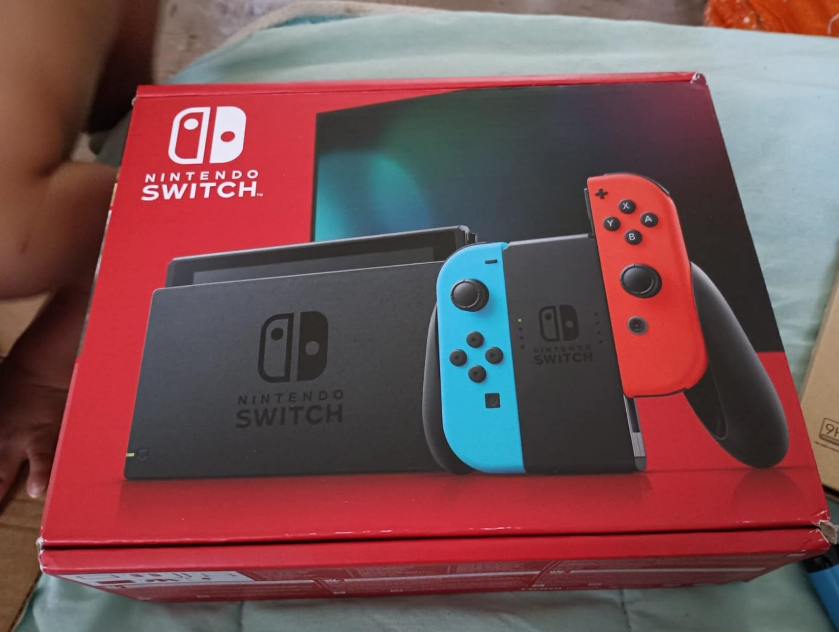Have you ever wondered how to take your Nintendo Switch gaming experience to the next level? One exciting option is to connect your Nintendo Switch on projector.
We will explore what a Nintendo Switch and a projector are, how to connect them, the benefits of playing on a projector, things to consider before making the connection, and alternative gaming setups.
Get ready to elevate your gaming experience with a larger screen size, better image quality, and a more immersive gameplay experience!

Table of Contents
Key Takeaways
- Experience a larger screen size when playing Nintendo Switch on a projector
- Get better image quality with a projector when playing your favorite games
- Immerse yourself in a truly immersive gaming experience by connecting your Nintendo Switch to a projector
What Is a Nintendo Switch?
The Nintendo Switch is a versatile gaming console developed by Nintendo that offers a unique hybrid gaming experience, allowing players to seamlessly switch between handheld and docked modes for gaming on the go or at home.
Its innovative design features a portable tablet-like screen that can be placed in a docking station connected to the TV for a full home console experience.
- One of the standout features is the detachable Joy-Con controllers, which can be used individually for multiplayer gaming or attached to the screen for solo play.
- Players can enjoy a vast library of games, ranging from popular AAA titles to indie gems, making it a versatile gaming platform for all types of gamers.
- What sets the Nintendo Switch apart is its seamless transition between handheld and docked modes, providing the flexibility to game wherever and whenever you please.
What Is a Projector?
A projector is an optical device that projects an image onto a surface, typically a screen or wall, magnifying and displaying content from various sources such as computers, media players, or gaming consoles like the Nintendo Switch.
Projectors work by utilizing light sources and lenses to enlarge the image and display it in a larger format for an audience to view. Regular projectors are designed for general multimedia purposes like presentations, movies, or slideshows, offering decent image quality and brightness.
On the other hand, gaming projectors are specifically optimized for enhancing the gaming experience. These projectors often have features like low input lag, high refresh rates, and excellent color accuracy to deliver smooth gameplay and vibrant visuals.
Setting up a projector for gaming is crucial to ensure minimal input delay, proper lighting conditions, and optimal screen size. Calibration of settings like resolution, aspect ratio, and refresh rate can significantly impact the gaming experience.

How to Connect a Nintendo Switch to a Projector?
Connecting your Nintendo Switch to a projector can enhance your gaming experience by transforming your gameplay onto a larger screen, offering immersive visuals and gameplay that rival traditional TV setups.
To begin this process, you will need an HDMI cable and an HDMI-to-USB-C adapter, which is required to connect the Switch to the projector.
- Start by turning off both the projector and the Switch.
- Connect one end of the HDMI cable to the HDMI port on the adapter and the other end to the projector’s HDMI input.
- Next, plug the USB-C end of the adapter into the Switch’s USB-C port.
- Turn on the projector and set it to the correct HDMI input channel.
- Your Switch display should now appear on the projector screen.
If there are any issues, ensure that all connections are secure, the projector is set to the correct source, and the Switch is outputting video through its HDMI settings.
What Cables Do I Need?
To connect your Nintendo Switch to a projector, you will typically need an HDMI cable for video transmission and audio output, ensuring that you can enjoy your gaming experience with both visuals and sound.
Depending on the setup of your projector and sound system, you might also require an auxiliary cable to connect the Switch to external speakers for enhanced audio quality. For certain advanced setups, incorporating a USB-C to HDMI adapter can be essential to bridge the connection between the Switch and the projector effectively.
When selecting cables for your Nintendo Switch setup, it’s crucial to prioritize durability and high-speed transmission to prevent signal loss or lag during gameplay. Opting for reputable brands like AmazonBasics or Anker can ensure a reliable connection and seamless gaming performance, making your gaming sessions truly immersive and enjoyable.
How Do I Connect the Cables?
Connecting the cables between your Nintendo Switch and a projector involves plugging the HDMI cable into the respective ports on both devices and adjusting the projector settings to display the input from the Nintendo Switch.
Once you’ve connected the HDMI cable securely to both the Switch and the projector, ensure that the projector is powered on. Select the correct input source on the projector, typically labeled as HDMI. If you encounter a blank screen, try checking the HDMI connection for any loose ends or swapping the HDMI cable with another one to rule out any technical issues. Adjusting the resolution settings on the Nintendo Switch and the projector can enhance the display quality for an optimal gaming experience.

What Are the Benefits of Playing Nintendo Switch on a Projector?
Playing your Nintendo Switch on a projector offers several benefits, including a larger screen size that enhances visibility, better image quality for more immersive visuals, and an overall gaming experience that feels larger than life.
One of the key advantages of using a projector for gaming is the ability to display games in their full glory on a massive screen, allowing for a more cinematic and theatrical feel to the gameplay. This larger screen size not only enhances the visibility of details within the game but also creates a more immersive environment that draws players further into the virtual world.
The superior image quality produced by projectors ensures that every pixel and color is rendered vividly, bringing games to life with stunning clarity and definition. This level of visual fidelity adds depth to the gaming experience, making every scene, character, and action pop with vibrant realism.
Larger Screen Size
One of the key benefits of playing Nintendo Switch on a projector is the significantly larger screen size compared to gaming on a TV or monitor, providing a more cinematic and expansive gaming experience.
This larger screen size immerses players in the game world, making every detail more vivid and lifelike.
With the projection creating a theater-like environment, the visuals of Nintendo Switch games truly come to life, enhancing the overall gameplay experience.
The expansive display encourages players to delve deeper into the game’s storyline and environments, fostering a heightened sense of engagement.
Better Image Quality
Connecting your Nintendo Switch to a high-quality projector can significantly enhance image quality, offering sharper graphics, vibrant colors, and improved visual details that elevate the gaming experience to new levels of clarity and realism.
With a projector’s larger display size and high resolution capabilities, gamers can get fully immersed in the intricacies of the game world. The enhanced visuals provide a more expansive view, allowing players to spot details they might have missed on a smaller screen.
The improved image quality on a projector can make games feel more lifelike, enhancing the overall gaming experience. From the vivid colors to the fine textures, every element is showcased with stunning clarity, contributing to a heightened sense of realism.
Immersive Gaming Experience
Playing Nintendo Switch games on a projector delivers an immersive gaming experience that surrounds players with captivating visuals and dynamic audio, creating a heightened sense of presence and engagement in the game world.
Imagine the thrill of racing through vibrant Mario Kart tracks with every curve and power-up bursting to life on a large, crisp screen before your eyes. The intensity of battling foes in The Legend of Zelda becomes even more epic as the quest unfolds in larger-than-life proportions around you. Each footstep, sword clash, or magic spell resonates through the room, immersing the player in every gaming moment.

What Are the Things to Consider Before Connecting a Nintendo Switch to a Projector?
Before connecting your Nintendo Switch to a projector, it’s essential to consider factors such as projector compatibility, room lighting conditions, and sound setup to optimize your gaming experience and avoid technical challenges.
When setting up your Nintendo Switch with a projector, start by ensuring that the projector has the necessary inputs to connect to the Switch, such as an HDMI port. It’s crucial to select a projector that supports the Switch’s resolution to experience crisp visuals.
Consider the ambient lighting in the room where you’ll be gaming. Too much light can wash out the image, while too little light can strain your eyes. Finding the right balance will enhance your visual experience.
For a complete gaming setup, focus on the sound arrangements. Connecting external speakers or headphones to the projector can provide immersive audio to complement the stunning visuals.
Projector Compatibility
Ensure that your projector is compatible with HDMI inputs and supports the resolution and refresh rate requirements of the Nintendo Switch to deliver optimal performance and visual quality during gameplay.
Projector compatibility plays a crucial role in enhancing your gaming experience, especially when using devices like the Nintendo Switch. The right projector ensures seamless connectivity and smooth display of game graphics. To achieve this, look for technical specifications such as HDMI input support, resolution capability matching the Switch’s requirements, and a high refresh rate for fluid gameplay.
Ensuring these features in your projector setup can make a significant difference in how your games are displayed, minimizing lag and ensuring that you enjoy every moment of gaming to the fullest. Remember, a compatible projector can truly elevate your gaming sessions and provide immersive visuals that enhance your overall gameplay enjoyment.
Room Lighting
Adjust the room lighting to achieve an optimal balance between ambient light and screen visibility when gaming on a projector, as excessive glare or darkness can impact image quality and overall gaming experience.
One of the key considerations is to reduce glare, which can be achieved by positioning the projector to avoid direct light sources and using curtains or blinds to control natural light entering the room. Consider using ambient lighting such as dimmable overhead lights or strategically placed floor lamps to create a comfortable gaming environment without causing strain on your eyes during extended gameplay sessions.
Sound Setup
Ensure that your sound setup complements the visual experience when using a projector with your Nintendo Switch, whether through external speakers, gaming headsets, or projector audio output options to enhance gameplay immersion.
Having a high-quality sound setup is crucial for projector gaming as it can elevate your gaming experience to a whole new level. Audio quality plays a significant role in creating an immersive atmosphere, allowing you to hear every detail of the game with precision. By syncing sound effects with gameplay visuals, you can enhance the overall gaming ambiance and make it more engaging.
What Are the Alternatives to Using a Projector for Nintendo Switch?
While gaming on a projector offers unique advantages, alternatives for playing Nintendo Switch games include using a TV or monitor, switching to handheld mode for portability, or utilizing the docked mode for traditional gaming setups.
Playing on a TV or monitor can enhance the visual experience, immersing you in intricate worlds with vibrant colors and sharp details. Handheld mode provides the flexibility to enjoy games on the go, ideal for commuters or travelers seeking gaming entertainment during long journeys. Docked mode, on the other hand, offers a more classic gaming experience, perfect for multiplayer sessions or when you want to dive deep into a game without any distractions. Choosing the right setup depends on your preferences and the gaming scenario at hand.
TV or Monitor
Using a TV or monitor for Nintendo Switch gaming provides a familiar and traditional setup, offering a standard screen size and display format that suits various gaming preferences and environments.
When opting between a TV and a monitor for Nintendo Switch gaming, the key aspect to assess is the display characteristics. TVs typically offer larger screen sizes, making them perfect for multiplayer sessions or for those who enjoy immersive gaming experiences. On the other hand, monitors are prized for their high refresh rates and lower latency, enhancing responsiveness for competitive gaming. The resolution options vary between the two setups, with 4K TVs delivering stunning visual clarity and 1440p monitors striking a balance between detail and performance.
Handheld Mode
The handheld mode of the Nintendo Switch allows players to enjoy gaming on the go, offering portability and convenience for playing games in various locations without the need for external displays or setups.
One of the primary advantages of using the handheld mode is the freedom it provides to gamers to continue their gaming sessions regardless of their location. Whether you are commuting on a train, relaxing in a park, or waiting at a doctor’s office, the handheld mode offers a seamless gaming experience.
The portability of the Nintendo Switch in handheld mode makes it easy to carry around in a bag or pocket, ensuring that you can enjoy your favorite games anytime, anywhere.
Docked Mode
In docked mode, the Nintendo Switch connects to a TV or monitor through the dock, offering a traditional gaming setup with larger screens, enhanced visuals, and the option for multiplayer gaming experiences.
Playing in docked mode allows for a seamless transition from handheld mode to the big screen, immersing players in the gaming world like never before. With the enhanced visuals, textures come to life, details are sharper, and colors are more vibrant, bringing a whole new level of visual enjoyment. The ability to connect external peripherals such as controllers, keyboards, and headsets enhances gameplay control and experience.
Frequently Asked Questions
1. How can I connect my Nintendo Switch to a projector?
To connect your Nintendo Switch to a projector, you will need an HDMI adapter or cable. Simply plug one end of the HDMI cable into the HDMI port on your Nintendo Switch and the other end into the HDMI port on the projector. Then, switch the projector to the correct input source and you should see your Switch screen displayed
1. How can I connect my Nintendo Switch to a projector?
To connect your Nintendo Switch to a projector, you will need an HDMI adapter or cable. Simply plug one end of the HDMI cable into the HDMI port on your Nintendo Switch and the other end into the HDMI port on the projector. Then, switch the projector to the correct input source and you should see your Switch screen displayed.
2. Can I use a wireless connection to play my Nintendo Switch on a projector?
While some projectors allow for wireless connections, the Nintendo Switch does not have this capability. You will need to use an HDMI cable or adapter to connect your Switch to the projector.
3. Will the Switch resolution change when connected to a projector?
The resolution of the Nintendo Switch will adjust to match the resolution of the projector. So, if your projector has a lower resolution, the Switch’s display may appear slightly pixelated or blurry.
4. Can I still use the Joy-Con controllers when playing on a projector?
Yes, you can still use the Joy-Con controllers when playing on a projector. Simply detach them from the Switch and use them as you normally would.
5. Can I connect multiple Nintendo Switch consoles to one projector?
Yes, you can connect multiple Nintendo Switch consoles to one projector by using a HDMI switcher. This will allow you to switch between the different consoles without having to constantly unplug and replug cables.
6. Will the audio from my Nintendo Switch come through the projector’s speakers?
Yes, the audio from your Nintendo Switch will come through the projector’s speakers as long as the projector has built-in speakers or is connected to external speakers. If not, you can use the Switch’s headphone jack or connect external speakers to the projector.
Read Also: A comprehensive analysis of thread: AMC real 3D vs digital
